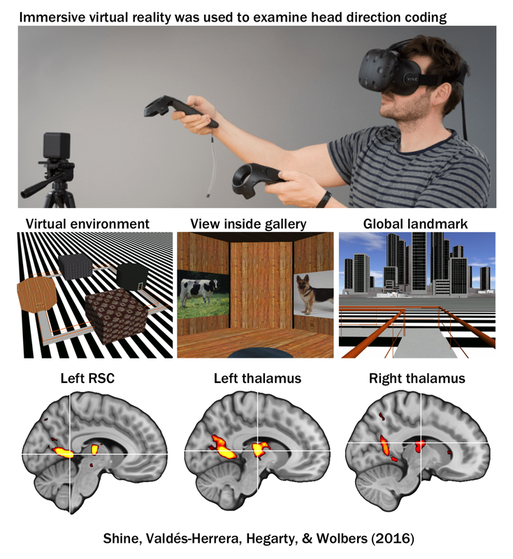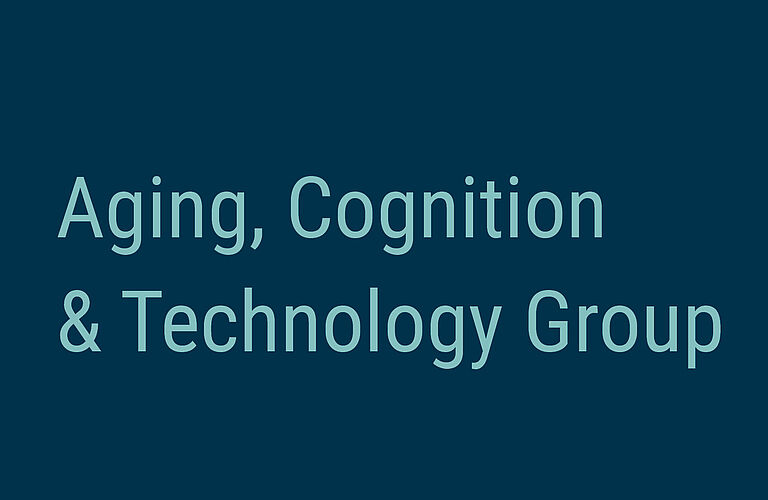Neural and behavioural mechanisms of human spatial navigation
Finding our way in the world is a particularly complex behaviour, because it involves perceiving spatial information from multiple sensory cues, creating and maintaining spatial representations in short- and long-term memory, and using these representations to guide navigational behaviour. Given this complexity of cues, representations and processes, it is not surprising that our current understanding of how we solve navigational problems – and the underlying neuronal mechanisms – still is relatively limited.
To characterise such mechanisms, we perform behavioural and neuroscientific experiments on fundamental spatial processes, for example head direction coding (see Figure). These processes are key for many forms of navigation and spatial learning and have thus paved the way for developing a detailed understanding of more complex forms of navigation such as wayfinding in large-scale environments.

The Human Retrosplenial Cortex and Thalamus Code Head Direction in a Global Reference Frame.
In rodents, head direction (HD) cells signal its facing direction in the environment via increased firing when the animal assumes a certain orientation, and are akin to a neural compass. In the study by Shine et al. (2016), we used cutting-edge, immersive virtual reality to study the neural correlates of this process in humans. Outside of the scanner, participants wore a head-mounted display whilst they explored a virtual environment, comprising four “galleries”, and were required to learn different images associated with different global landmarks. In the fMRI scanner, we presented the individual images, and, consistent with work in rodents, found evidence of head direction coding in the thalamus and retrosplenial cortex. Future research in the lab will focus on elucidating the neural mechanisms of HD coding, for example examining how different cues are integrated to form a constant signal, and how this process changes in ageing and neurodegeneration.
For more information regarding the head direction (HD) Coding project please click here.
Key references:
- Shine, J., Valdes-Herrera, J.P., Hegarty, M. & Wolbers, T. (2016). The Human Retrosplenial Cortex and Thalamus Code Head Direction in a Global Reference Frame. Journal of Neuroscience, 36(24):6371-6381.
- Wolbers T.; Klatzky R. L.; Loomis J. M.; Wutte M. G. & Giudice N. A. (2011). Modality-independent coding of spatial layout in the human brain. Current Biology, 21(11): 984-989.
- Wolbers, T.; Hegarty, M. (2010). What determines our navigational abilities? Trends in Cognitive Sciences, 14(3): 138-146.
- Wolbers, T.; Hegarty, M.; Büchel, C. & Loomis, J.M. (2008). Spatial updating: how the brain keeps track of changing object locations during observer motion. Nature Neuroscience, 11(10): 1223-1230.

